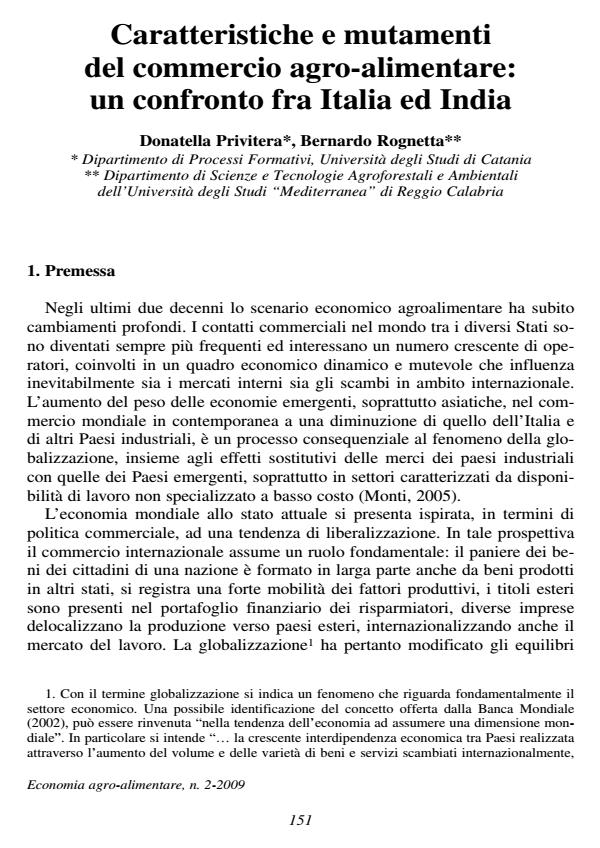Caratteristiche e mutamenti del commercio agro-alimentare: un confronto fra Italia ed India
Titolo Rivista ECONOMIA AGRO-ALIMENTARE
Autori/Curatori Donatella Privitera, Bernardo Rognetta
Anno di pubblicazione 2009 Fascicolo 2009/2
Lingua Italiano Numero pagine 17 P. 151-167 Dimensione file 153 KB
DOI 10.3280/ECAG2009-002008
Il DOI è il codice a barre della proprietà intellettuale: per saperne di più
clicca qui
Qui sotto puoi vedere in anteprima la prima pagina di questo articolo.
Se questo articolo ti interessa, lo puoi acquistare (e scaricare in formato pdf) seguendo le facili indicazioni per acquistare il download credit. Acquista Download Credits per scaricare questo Articolo in formato PDF

FrancoAngeli è membro della Publishers International Linking Association, Inc (PILA)associazione indipendente e non profit per facilitare (attraverso i servizi tecnologici implementati da CrossRef.org) l’accesso degli studiosi ai contenuti digitali nelle pubblicazioni professionali e scientifiche
The product specialisation of Italian trade: Italy and India - This paper examines the product specialisation of Italian trade over the period 2000-2006 to identify the roots of Italy’s sluggish trade performance with respect to India. In particular, the analysis focuses on the role of product specialisation in relation to world trade growth and competition from emerging countries. We used trade indicators to describe and asses the state of trade flows and trade patterns of a particular country like India and also to monitor these flows over time and across countries. Till the early 1990s, India was a closed economy: average tariffs exceeded 200 percent, quantitative restrictions on imports were extensive, and there were stringent restrictions on foreign investment. The country began to cautiously reform in the 1990s, liberalizing only under conditions of extreme necessity. Since that time, trade reforms have produced remarkable results. The economy is now among the fastest growing in the world. This leads some to see India as a ‘rapid globalizer’ while others still see it as a ‘highly protectionist’ economy. India however retains its right to protect when need arises. Agricultural tariffs average between 30-40 percent, anti-dumping measures have been liberally used to protect trade. India is now aggressively pushing for a more liberal global trade regime, especially in services.
JEL Code: Q17
Key words: emerging countries, trade indicators; competitive pressures
Donatella Privitera, Bernardo Rognetta, Caratteristiche e mutamenti del commercio agro-alimentare: un confronto fra Italia ed India in "ECONOMIA AGRO-ALIMENTARE" 2/2009, pp 151-167, DOI: 10.3280/ECAG2009-002008